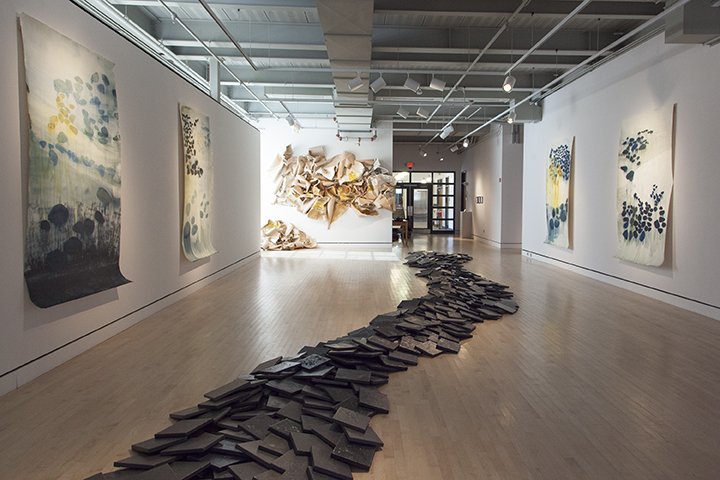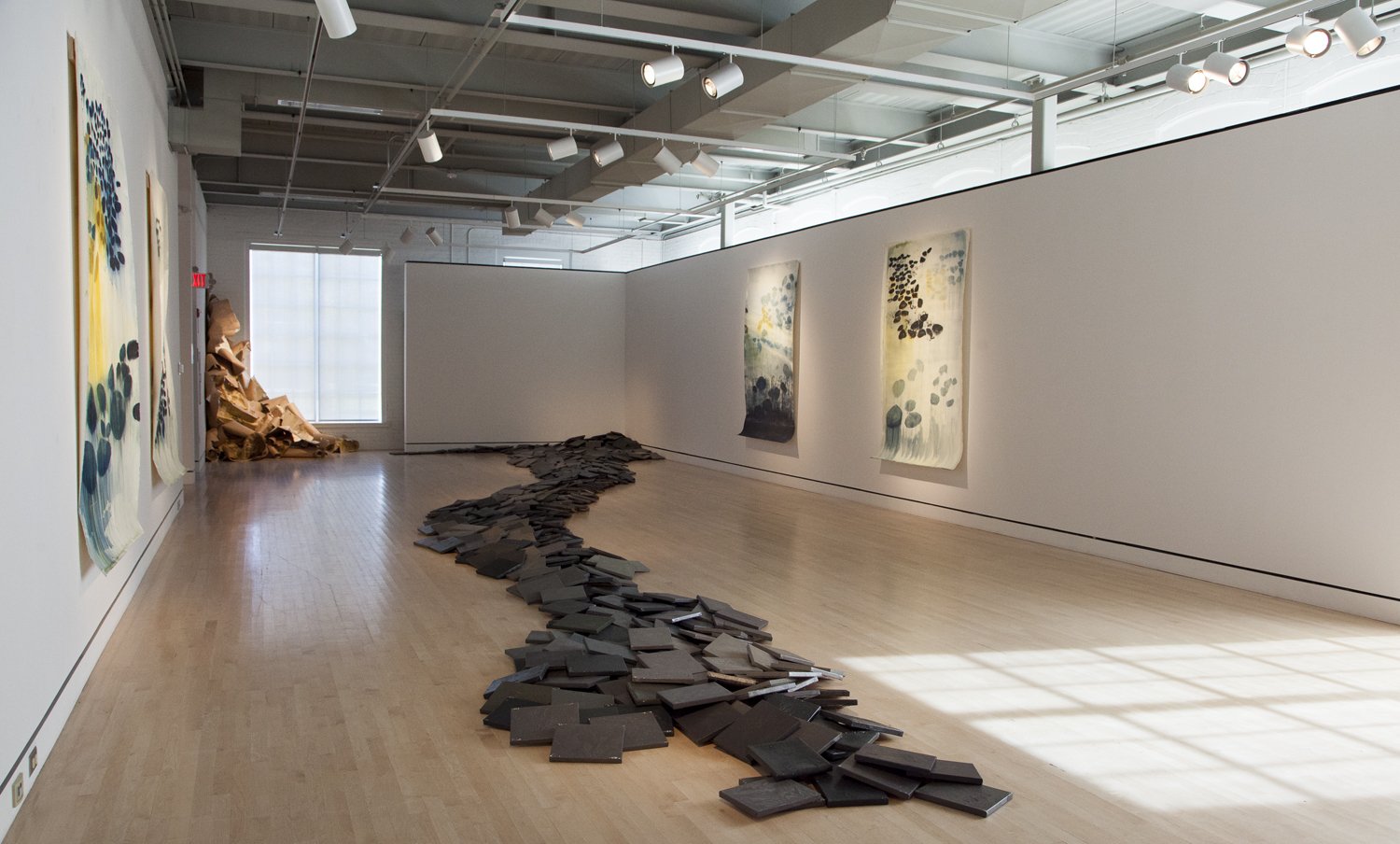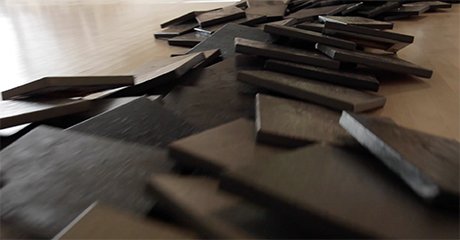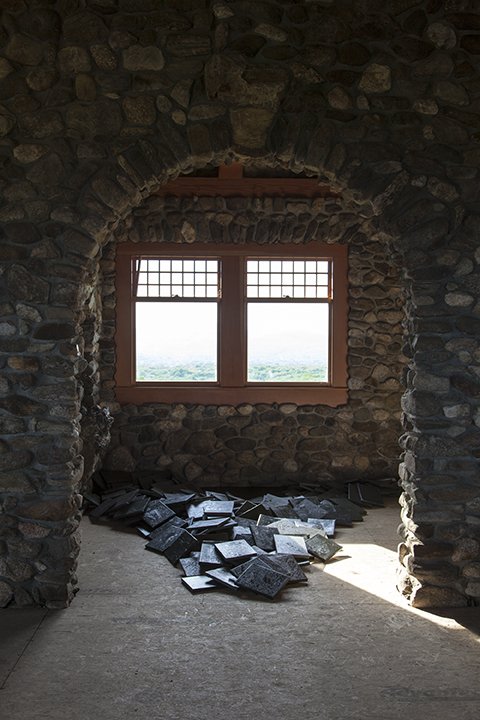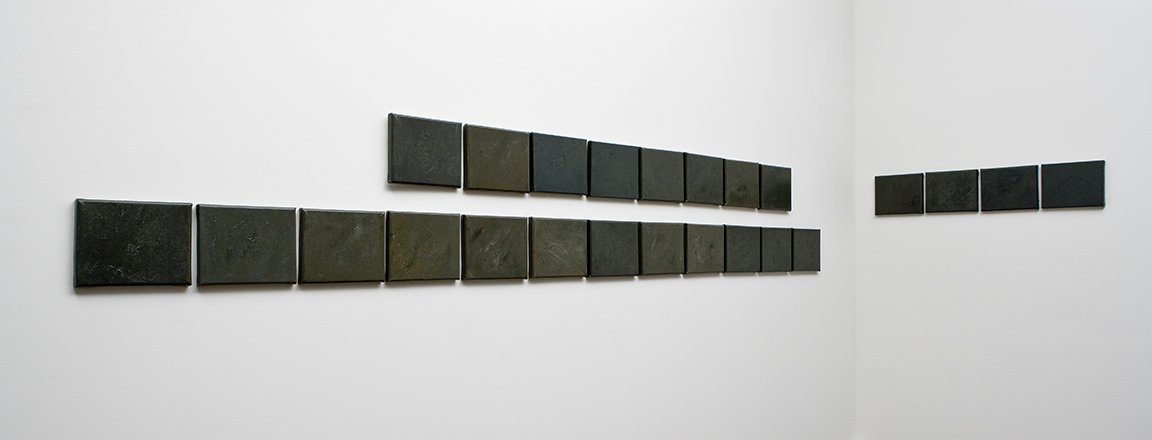
sediments
The first sediments paintings date to 2007, when I mixed up a batch of Gamblin’s Mars Black, Old Holland’s Gamboge Lake and Redgold Lake, and slathered it onto 100 small store-bought canvases, each one nearly identical to the one before. The first sediments piece, exhibited at Waterfall Arts (Belfast, Maine 2007), was two-dimensional, following the form of my earlier installations, Bog Dig and Geologics. As my understanding of the grid’s dimensionality grew, so too did the installations.
The next three installations, Slump, The Ministry of Revelation, and Biochemical Composition, were designed as set pieces with narrative components mirroring human aspirations and foibles. In each, the painted canvases are treated casually, as though there is nothing more precious about them than there is about individual particles of geological sediment. Biochemical Composition includes manufactured plastic and materials available from the earth’s bounty, such as sedimentary rock and periwinkle shells. The Ministry of Revelation simulates an earthquake, with a single wall-mounted canvas whose surface hints at the puckering of the earth’s crust. Slump is a play on the metaphorical relationship between a geological slump or landslide, and the vagaries suffered by politicians. The photograph above the installation that references Kentucky politics in the late 1940’s, shows then-governor Earle Clements with a group of journalists.
For the exhibitions Ground/Underground and Stones on the Move (2014 and 2016), I increased the number of canvases to 700, using the same paint mix as for the first 100. The paintings are distributed as though they are earth-born, mimicking both a silt-laden river and a mass of small loose stones called a scree. Though it was not my intent, in both settings, viewers were fooled into thinking that the canvases were actual slates.
With sediments seven, the most recent (2023) installation, the sediments return to a wall in Belfast, this time in a historical building whose original roof happened to be slate.
“With sediments seven, Dudley’s careful consideration of the canvases converses with the architectural space in which they are installed, a hybrid studio and shared exhibition space in a historic masonic temple. Recalling her earlier installation sediments one, the grid arrangement expands into the space, this time working itself up the wall, creating a chance pattern of shades and textures. Creating the illusion of slate and reflecting the environment, the canvases also relate to the nearby works by others in the space which contain subtle nods to the environmental concerns they ask you to consider.”
—Bethany Engstrom, Curator, S6 Space








